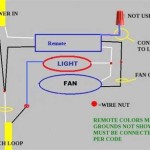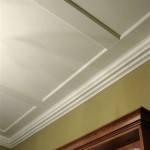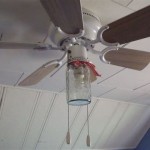How to Install a Heat Register in a Ceiling
Installing a heat register in a ceiling can be a beneficial project for improving the overall heating efficiency and comfort of a room. This process involves carefully selecting the appropriate register, preparing the ceiling opening, connecting the ductwork, and securing the register in place. Accuracy and adherence to safety precautions are paramount to ensure a successful and functional installation.
This article provides a comprehensive guide to installing a heat register in a ceiling, covering essential steps and considerations for achieving optimal performance. It is crucial to consult local building codes and regulations before starting any HVAC-related project to guarantee compliance and safety.
Key Point 1: Planning and Preparation
The initial phase of installing a ceiling heat register involves thorough planning and preparation. This includes selecting the appropriate register type, identifying a suitable location in the ceiling, and gathering the necessary tools and materials. Neglecting this stage can lead to complications during the installation process.
Selecting the Right Register: Heat registers come in various sizes, shapes, and materials. The choice depends on the size of the room, the heating capacity required, and the aesthetic preferences of the homeowner. Common types include square, rectangular, and round registers, each offering different airflow patterns. Registers are often made of steel, aluminum, or plastic. Consider the register's airflow capacity (measured in cubic feet per minute, CFM) to ensure it aligns with the HVAC system's output. Dampers, or adjustable louvers, are a crucial feature to look for as they allow for controlling the amount and direction of airflow. Select a register with adjustable dampers that are easily accessible after installation.
Choosing the Location: Optimal register placement is crucial for efficient heat distribution. The ideal location is typically near an exterior wall or window, where heat loss is greatest. This helps to counteract drafts and maintain a consistent temperature throughout the room. Avoid placing registers near furniture or obstructions that could block airflow. Consider the existing ductwork layout and accessibility. The chosen location should allow for a relatively straightforward connection to the duct system. Ensure adequate clearance around the register for proper airflow and maintenance access. Mark the chosen location on the ceiling using a pencil and measuring tape.
Gathering Tools and Materials: Having the right tools and materials on hand before starting the installation can significantly streamline the process. Essential tools include a drywall saw or utility knife, measuring tape, pencil, safety glasses, gloves, a drill with appropriate drill bits, a screwdriver (or power screwdriver), duct tape, and a ladder. Materials required typically include the register itself, sheet metal screws (or drywall screws), duct sealant, and insulation (optional, for sealing gaps and preventing heat loss). Consider using a stud finder to avoid cutting into ceiling joists or wiring when making the opening.
Key Point 2: Cutting the Ceiling Opening and Connecting Ductwork
Once the planning phase is complete, the next step involves creating the opening in the ceiling for the register and connecting it to the existing ductwork. This stage requires precision and care to avoid damaging the ceiling or the duct system.
Cutting the Opening: Using the marked outline on the ceiling as a guide, carefully cut the opening for the heat register. Start by scoring the drywall with a utility knife to prevent chipping. Then, use a drywall saw to cut along the outline. Take your time and use steady, controlled movements to ensure a clean and accurate cut. Wear safety glasses to protect your eyes from debris. If the chosen location is near a ceiling joist, it may be necessary to modify the opening or relocate the register slightly. Double-check the dimensions of the register before cutting to ensure a snug fit. Avoid cutting into any wiring or plumbing that may be present in the ceiling cavity.
Preparing the Ductwork: Assess the existing ductwork in the ceiling to determine the best method for connecting the new register. In many cases, a flexible duct connector will be needed to extend the ductwork to the opening. Flexible ducts are easier to maneuver and connect, especially in tight spaces. Ensure the flexible duct is the correct diameter for both the existing ductwork and the register's collar. Secure the flexible duct to the existing ductwork using duct tape and clamps. Seal all joints with duct sealant to prevent air leaks. Inspect the existing ductwork for any damage or leaks and repair as needed before proceeding.
Connecting the Ductwork to the Register: Carefully attach the flexible duct connector to the register's collar, ensuring a tight and secure fit. Use duct tape and clamps to secure the connection. Apply duct sealant around the joint to create an airtight seal, preventing air leakage and maximizing heating efficiency. Ensure the duct is properly supported to prevent sagging or kinking, which could restrict airflow. Carefully route the ductwork to avoid any obstructions or sharp bends. Secure the ductwork to ceiling joists or other support structures using duct straps or hangers.
Key Point 3: Installing and Securing the Register
The final step involves installing the heat register into the ceiling opening and securing it in place. This stage requires careful attention to detail to ensure a flush and secure fit, preventing drafts and ensuring optimal performance.
Inserting the Register: Carefully insert the heat register into the prepared opening in the ceiling. Ensure the register is aligned correctly and sits flush against the ceiling surface. If the opening is too large, use shims or filler strips to fill the gaps and create a snug fit. Check for any obstructions or interferences that may prevent the register from seating properly. Adjust the opening as needed to ensure a smooth and flush installation.
Securing the Register: Once the register is properly positioned, secure it in place using sheet metal screws or drywall screws. Pre-drill pilot holes to prevent the drywall from cracking. Use screws that are long enough to penetrate the ceiling material and provide a secure hold, but not so long that they puncture the ductwork. Space the screws evenly around the perimeter of the register to distribute the load and prevent warping. Avoid over-tightening the screws, which could damage the register or the ceiling. Check the register for stability and adjust the screws as needed.
Finishing Touches: After the register is secured, inspect the installation for any gaps or imperfections. Seal any remaining gaps around the register with caulk or sealant to prevent drafts and improve energy efficiency. Clean the register and the surrounding ceiling area to remove any dust or debris. Test the register by turning on the heating system and checking for proper airflow. Adjust the dampers on the register to control the amount and direction of airflow as needed. Inspect the ductwork connections for any air leaks and repair as needed. Consider painting the register to match the ceiling color for a more seamless and aesthetically pleasing appearance.
By following these steps carefully, anyone can successfully install a heat register in a ceiling, improving the comfort and efficiency of their heating system.

Replacing A Heat Vent Register

How To Secure A Heat Register In Ceiling Without S

How Can I Secure A Vent Register To Drywall On Ceiling Home Improvement Stack Exchange

Easy To Install Modern Vent Cover For Ceilings Walls And Floors Angela Marie Made

The Ceiling Diffuser In Cooling

Installing An Hvac Supply Register Airtec In The Ceiling Cutting Hole Connecting Flex Duct

How Can I Secure A Vent Register To Drywall On Ceiling Home Improvement Stack Exchange

Hvac Diffuser Installation Fine Homebuilding

Hvac Diffuser Installation Fine Homebuilding

Ducts Is A Lip Necessary On An Hvac Ceiling Register Boot For Use With Flexible Ducting Home Improvement Stack Exchange
Related Posts








